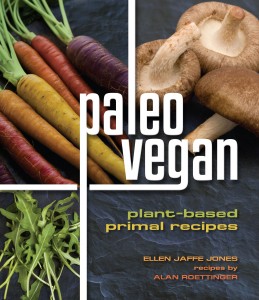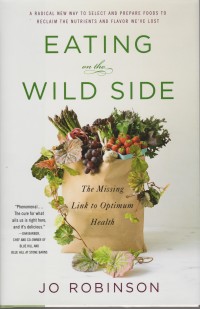Since that time, I’ve broadened my horizons, and now I enjoy yams in all sorts of ways. I especially like them–and other sweet vegetables–in spicy dishes, such as tagines and curries. I recently bought a small case of garnet yams, opening the door to a rash of experimentation. Two favorites, both very quick and easy, were:
1. “Leek and Yam Curry“
This was partly an effort to use up some leeks before they went south. It consists of just two vegetables, with a little cilantro, coconut oil, hot curry powder, and Celtic salt. I selected a couple of the longest, thinnest yams, peeled them, and then cut 1/4-inch thick coins. The leeks I slit lengthwise in order to easily wash out the grit, and then sliced them.
 First I heated a couple tablespoons of coconut oil in the pot, seared the yam slices on both sides, and removed them to a plate. I added the leeks to the pot and sauteed them until they softened slightly, adding a hefty spoonful of the curry powder and salt about halfway through. Then I returned the yams to the pot and stirred them into the leeks. I added just a splash of water to prevent sticking, and covered the pot until the vegetables were tender. Just before serving, I stirred in a bunch of coarsely chopped cilantro. The whole process took only about 20 minutes, but the dish had a sophisticated aura, with interesting flavor and texture contrasts–not to mention the fact that (as far as I know) it was a combination that had never been tried before.
First I heated a couple tablespoons of coconut oil in the pot, seared the yam slices on both sides, and removed them to a plate. I added the leeks to the pot and sauteed them until they softened slightly, adding a hefty spoonful of the curry powder and salt about halfway through. Then I returned the yams to the pot and stirred them into the leeks. I added just a splash of water to prevent sticking, and covered the pot until the vegetables were tender. Just before serving, I stirred in a bunch of coarsely chopped cilantro. The whole process took only about 20 minutes, but the dish had a sophisticated aura, with interesting flavor and texture contrasts–not to mention the fact that (as far as I know) it was a combination that had never been tried before.
2. “Yam and Baby Bok Choy Panang Curry“
This one was even faster, in part because that’s just the nature of Thai-style curries, but also because I cut the yams a little thinner. I found some perfect little bok choy yesterday, and was determined to use them right away (versus waiting until they’re on their last gasp, and their outer leaves are beyond salvage). So last night I made the second yam curry in a week. I sliced the stem portion of the bok choy roughly 1/4-inch thick, and cut the leaves roughly an inch square, keeping the two separate. The yams I just peeled, halved lengthwise, and sliced about 1/8-inch thick.
I heated about a tablespoon of coconut oil in a large pot and added the yam slices, stirring for about a minute before adding a gigantic gob of panang curry paste. I continued stirring for another minute, until the curry paste was well incorporated, and then added the bok choy stems. I stir-fried the mixture for another minute, and then added a can of coconut milk, using the spoon to dislodge any bits that may have stuck to the bottom of the pot. I covered the pot and let the mixture cook until the vegetables were just tender–just about 4 minutes. I removed the cover and added some diced “sprouted” tofu and then the bok choy tops, stirring until they wilted.
To serve, I pulled the pot off the heat and stirred in a large handful of coarsely chopped basil. I had intended to use two cans of coconut milk, but discovered only one remaining in the pantry, so that was it. (Note to self: don’t let that happen again!) This made the dish a little less rich, but no less spicy. It was more like a vegetable dish with a fair amount of sauce, instead of the way I normally make it, which is almost like a creamy soup. I liked this lighter version, even though initially I had to get over the fact that it wasn’t what I had intended (sometimes that’s not easy). It was pretty spicy for my wife–who is trying to eat more chilies these days, to benefit from their anti-inflammatory qualities–but I used the sriracha liberally.
More and more, as time goes on, I’m gravitating towards nutrient-dense, highly medicinal foods. My body responds enthusiastically to my choices, and my palate could not be happier. Must be doing something right…
.






